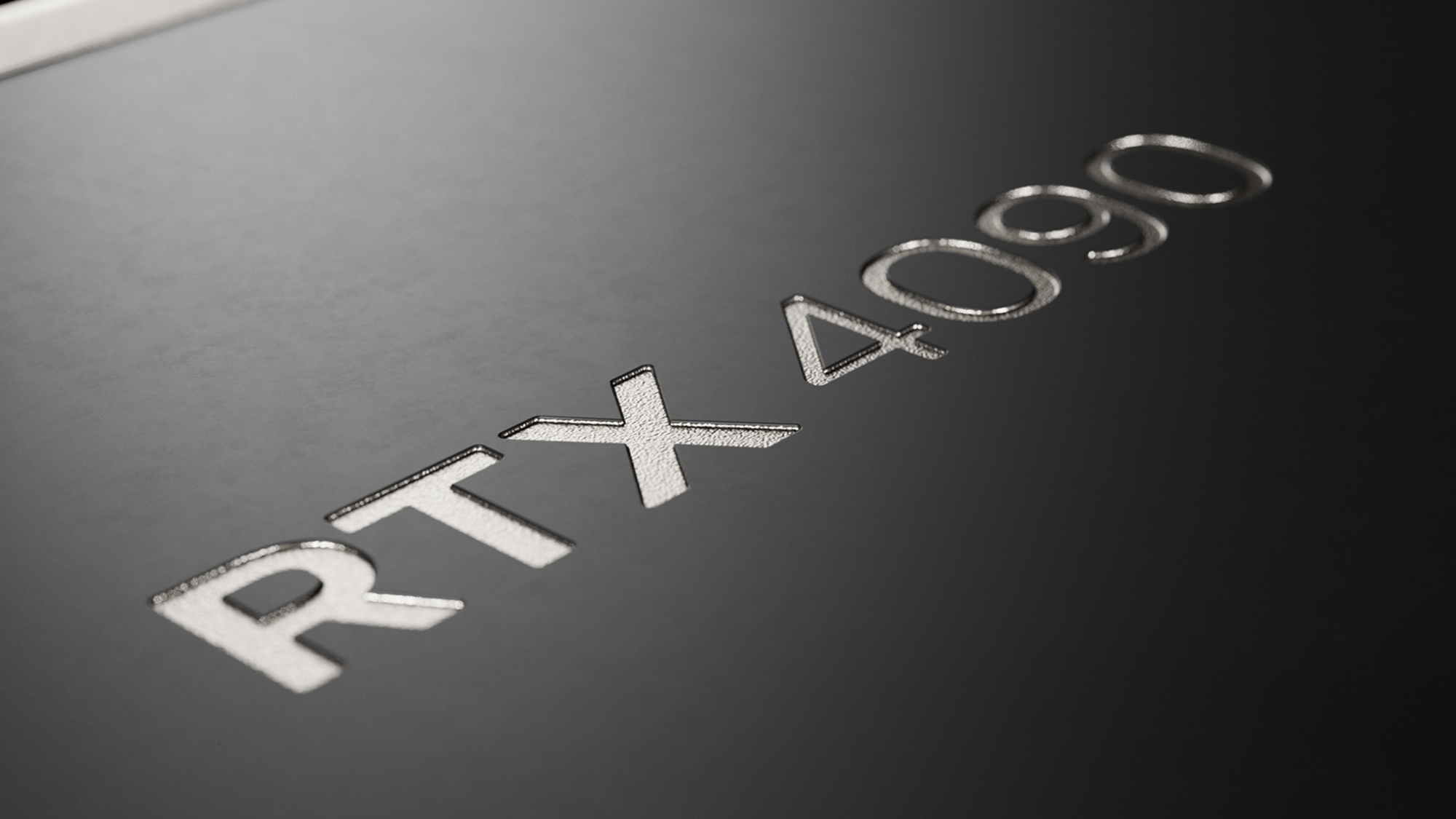Nvidia RTX 4080 — 2 reasons to buy and 3 reasons to skip
Should you get the Nvidia RTX 4080?

The Nvidia RTX 4080 has arrived a month after the Nvidia RTX 4090. Based on early reviews, Nvidia’s latest “Lovelace” graphics card is about 30 percent faster than its predecessor, the Nvidia RTX 3080, and overall faster than the entire Nvidia RTX 30 series. Like the RTX 4090, this massive card also boasts the new DLSS 3, which can exponentially increase frame rates in video games.
But is the $1,199 Nvidia RTX 4080 worth the asking price? While it certainly offers better performance than previous-gen cards, those boosts may not mean much to those who are happy with their existing GPU. However, serious PC gaming enthusiasts who want a current-gen Nvidia card but can’t afford the $1,599 RTX 4090 could find it worthwhile.
Below, we’ll go over reasons to buy and reasons to skip the Nvidia RTX 4080.
Reasons to buy the Nvidia RTX 4080
More power
This one is a given, but the main reason to buy the Nvidia RTX 4080 is that it’s more powerful than its predecessor. Based on independent testing performed by sister site, Tom’s Hardware, the RTX 4080 is 21 percent faster than the Nvidia RTX 3090 Ti released earlier this year and 51% faster than the RTX 3080. However, as the site notes, it's only 38 percent faster than the card it’s replacing, the Nvidia RTX 3080 Ti. The RTX 4080 also delivers 78 percent of the RTX 4090’s performance.

Regarding game performance compared to the 3090 Ti, Tom’s Hardware saw a 49% improvement in Total War: Warhammer 3 and a 40 percent improvement in Forza Horizon 5. Some titles like Microsoft Flight Simulator only saw an 8 percent improvement.
Though these improvements are in-line with improvements seen between the RTX 30 series and its predecessor generation, they’re still impressive — especially if you want to play games at high resolutions and frame rates. The RTX 30 series cards aren’t exactly lacking when it comes to delivering high-performance gaming, but with an RTX 4080 GPU in your rig, you’ll have more headroom when playing current titles — not to mention have enough power to handle upcoming titles.
DLSS 3
DLSS 3 is arguably the defining feature of the RTX 40 series for those with the best gaming monitors featuring high refresh rates.
Get instant access to breaking news, the hottest reviews, great deals and helpful tips.
Deep Learning Super Sampling (DLSS) isn’t new, but it’s received a considerable upgrade with Nvidia’s new graphics cards. As with previous versions, DLSS 3 renders frames at a lower resolution and then upscales them to higher resolutions. Machine learning technology then uses data from the surrounding frames to create interpolated (extra) frames between the existing frames. In turn, this helps boost a game’s overall frame rate.
Nvidia released a video showing DLSS 3 in action. With DLSS 3 and ray tracing turned off, racing game F1 2022 ran at a respectable 65 frames per second. With DLSS 3 and ray tracing enabled, the frame rate shot up to a staggering 172 fps. Nvidia also posted a video of Cyberpunk 2077 running at 102 fps with DLSS 3. Considering how the game ran at 23 fps without the feature, that's a huge leap.
If you were worried about increased latency with DLSS 3, you’ll be happy to know that the feature integrates Nvidia Reflex to maintain nominal system latency. According to Nvidia, DLSS 3 can reduce latency by as much as twice the native latency. While hardcore competitive gamers will likely not want DLSS 3 enabled during online matches, regular players should be able to play titles without much (or any) perceptible latency.
Reasons to skip the Nvidia RTX 4080
Reasons to skip the Nvidia RTX 4080
At $1,199, the RTX 4090 is $400 cheaper than the $1,599 RTX 4090. Still, $1,199 is a hefty amount to pay for what is now the standard version of the GPU. After all, Nvidia “unlaunched” the $899 12GB edition of the card. The RTX 4080 doesn’t even have the “Ti” suffix denoting it as a premium card, yet it’s priced as if it were.
And while the performance gains are impressive compared to the RTX 30 series, those last-gen cards are still capable of running graphically-intensive games at high resolution and frame rates. This is anecdotal, but most of the PC players I know (myself included) are perfectly happy playing at 1440p. I don’t think there are a lot of people with an intense desire for 8K gaming. The performance gains don’t seem worth it to most people.
It’s too big!
The RTX 4090 drew some criticism due to its gigantic size. While it’s comical to see a GPU that’s almost as big as a PS5, it’s not so funny if the card can’t fit into a small PC case. Unfortunately, the RTX 4080 is just as big as the RTX 4090.

If you have a large enough PC case then the RTX 4080’s size may not present an issue. But those with smaller PC cases will be out of luck unless they get a bigger case.
Potential overheating issues
As PC Mag and other outlets have reported, several users claim that faulty cables are melting RTX 4090 connectors. The issue apparently stems from the 12VHPWR adapter that comes with the GPU, which funnels additional power to the card through a single cable. According to affected users, this adaptor can melt the plastic parts of the 16-pin connector. This issue hasn’t been resolved at the time of writing.
We can’t say that the RTX 4080 will face this same problem. However, it’s a potential hazard that prospective buyers should be aware of. In fact, it might be prudent to wait until Nvidia fixes the problem before even considering purchasing either RTX 40-series GPU. The last thing you want is to spend $1,199 GPU that fritzes out on you.
Outlook
I realize I’m not exactly biased when it comes to this topic. After all, I wrote a piece titled I’m skipping the Nvidia GeForce RTX 40-series right after the GPU line was announced. Though I still feel this way, I acknowledge that both Lovelace cards are objectively more powerful than their previous-gen counterparts. If you can afford them, I don’t think you’ll be terribly disappointed with your purchase.
With that said, you can’t go wrong with an RTX 30-series GPU. Games still run incredibly well on Nvidia’s last-gen cards and will likely do so for the foreseeable future. And if you’re looking to upgrade your existing card, RTX 30 cards are now more affordable than ever, especially with Black Friday deals in full swing.

Tony is a computing writer at Tom’s Guide covering laptops, tablets, Windows, and iOS. During his off-hours, Tony enjoys reading comic books, playing video games, reading speculative fiction novels, and spending too much time on X/Twitter. His non-nerdy pursuits involve attending Hard Rock/Heavy Metal concerts and going to NYC bars with friends and colleagues. His work has appeared in publications such as Laptop Mag, PC Mag, and various independent gaming sites.
